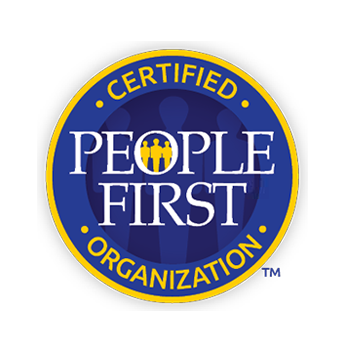People First ROI
Introducing T.R.I.P. — a Breakthrough Business Results Strategy for Connecting Leadership Training to the Bottom Line

American companies spend around $14 billion annually on leadership training, but only 15-20% of that training will actually impact the bottom line. Why? Many organizations do not have a robust measurement system in place that guarantees the transfer of learning to the bottom line.
Does your leadership training impact your bottom line? Is your ROI guaranteed? Can you state your ROI? This is one of the greatest gaps in the training industry. Even the training world finds this as their #1 challenge and gap which they have yet to master.
To ensure that you enjoy a solid return on the investment of your training dollars and impact business results, you must clearly and unequivocally determine the ROI of your leadership training initiatives!
The Solution?
TRIP - A Robust Methodology for Determining Leadership Training ROI
TRIP – Training Results Impact Path –is a prescriptive, behaviorally based, developmental path that guarantees the most successful transfer of all your leadership training efforts.

Our TRIP methodology provides credible and compelling data that not only measures the business impact of leadership training, but also identifies who applied the training, how it was applied, and what impact the new skills and behavioral applications are having on the experience of all stakeholders and on your bottom line.
We achieve this through the collection of hard data—from learners, their leaders, and their direct reports—and use a robust analysis process to estimate the level of learning that has been applied. In other words, using TRIP helps you evaluate how well your leaders are using training to get results.
TRIP examines the After Training Factors (ATFs) that are in place, seeking to identify the enablers of success, the barriers to successful implementation, and, most importantly, determine how to increase the enablers and eliminate all barriers to the application process.
TRIP goes even further and assesses the soft skills, social interactions, relational factors, and other subtle outcomes that are usually considered difficult (if not impossible) to quantify. For example . .
- What feedback mechanisms are in place? Have the learners created any kind of peer support function? If not, why not? What can be done to make peer support even more impactful?
- How have individuals been encouraged and inspired to apply their new leadership skills and behaviors? What incentives are in place to apply the learning?
- What is the realized value of the leadership training? Can we identify with confidence what percentage of participants are successfully applying the learning?
- What is the unrealized value to the organization? What percentage of the participants never applied the learning or tried and gave up? How many invested training dollars were “left on the table” because of this lack of success?
- How do the benefits of the program compare to the costs?



